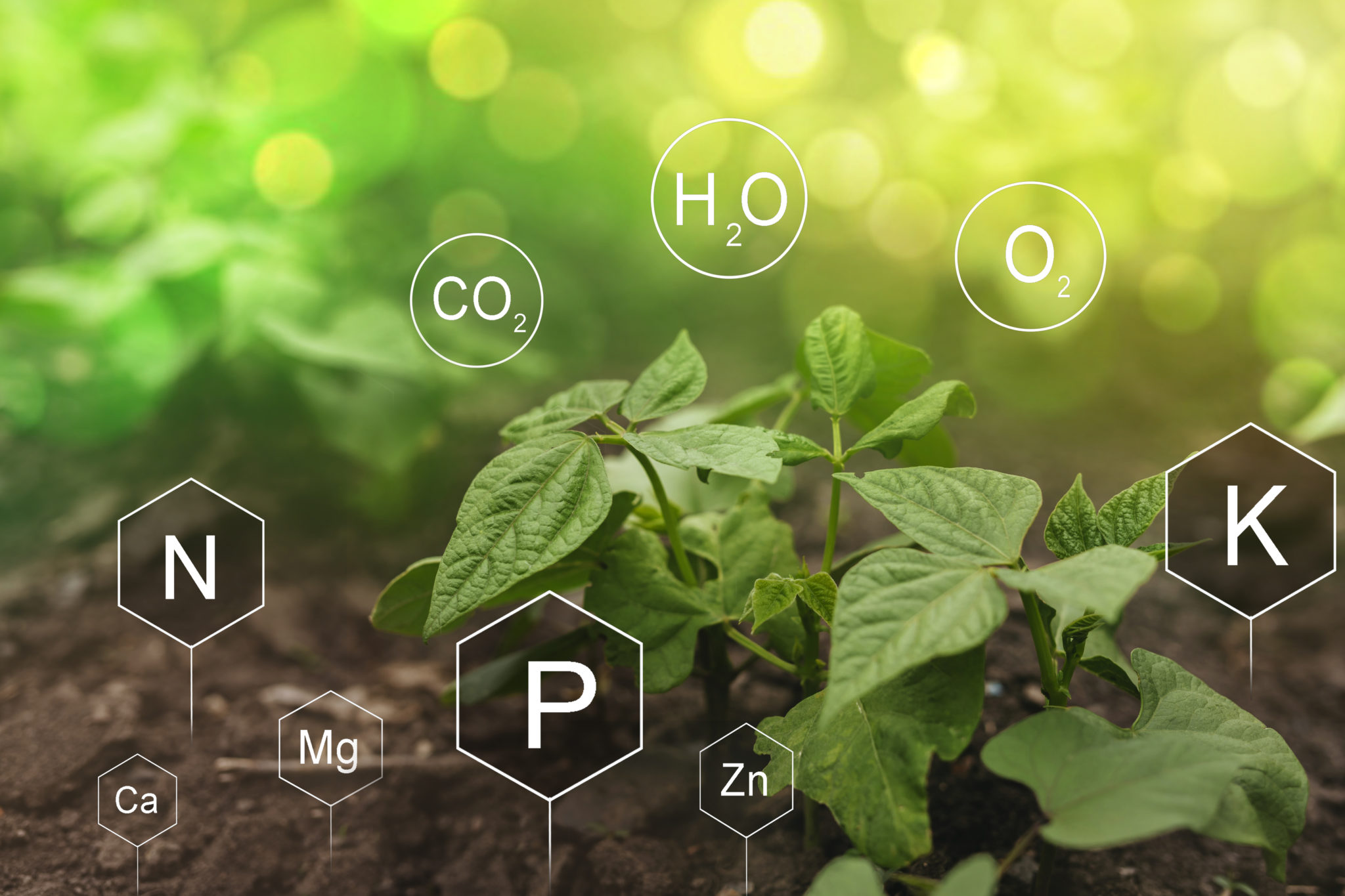God’s Control Systems: The Carbon Cycle
With so much discussion and concern about climate change, the more we learn about our planet the better off we’ll be. Science has provided some of that learning by revealing how Earth’s “natural control systems” have helped maintain climate stability.
A previous article, “God’s Control Systems: The Water Cycle,” discussed process control systems and how they maintain constant temperature for manufacture of a variety of everyday items. It described the water cycle as one of God’s control systems because it acts like a process control system to moderate Earth’s seasonal temperature variations.
The carbon cycle also has features that resemble control systems to make and maintain Earth as habitable for human life.
Earth is warmed by heat energy from the Sun and, in turn, Earth radiates heat. The principles of global warming entail that some of Earth’s radiated heat is reflected back by atmospheric “greenhouse gases” such as carbon dioxide (CO2). This reflected heat energy is called radiative forcing, and it adds to the heat received from the Sun. Earth’s temperature depends on the Sun’s output and radiative forcing.
The early Earth had an atmosphere similar to our nearest neighbors Venus and Mars: high in CO2 and lacking oxygen (O2). Multiple control processes, including the following, were required to make Earth habitable for humans.
Early Earth’s Control Systems
First, oceans appeared. CO2 combined with H2O to form carbonic acid (H2CO3). The carbon cycle graphic shows that CO2 derivatives became buried in limestone and other rock formations, reducing atmospheric CO2. This was the first of God’s natural control systems.
The second (reverse weathering) and third (weathering) natural control systems are summarized by Hugh Ross in his article, “Highly Fine-Tuned Reverse Weathering Stabilized Earth’s Early Climate.” As simple aquatic life-forms began to emerge, the Sun’s intensity was decreasing. If Earth had become cold enough to freeze the oceans, life might have come to an end. But chemical processes referred to as “reverse weathering”1 increased atmospheric CO2 to compensate for the dimming sun, and the resulting heat from radiative forcing allowed life-forms to flourish. This process continued for about 3 billion years. Then, just before the Cambrian period, the Sun began to brighten as more complex aquatic life-forms emerged. More sunlight might have made Earth too hot, but the process of “weathering”2 removed just the right amounts of atmospheric CO2 to compensate for the Sun’s increasing brightness,3 and life thrived.
Some of these earliest life-forms included photosynthetic microorganisms, which introduced photosynthesis (taking in CO2 and producing O2). Photosynthesis was the fourth of God’s carbon cycle control systems, but it did not yet provide enough O2 to support the more complex life-forms which appeared through the Cambrian period. The deficit was filled by what is referred to as the deep oxygen cycle: a critical intersection of the carbon cycle and the oxygen cycle. As atmospheric CO2 was subducted into Earth, chemical reactions with carbon compounds produced underground O2 which was injected into the atmosphere at the just-right time and quantity to sustain these emerging life-forms.
Green land plants emerged after the Cambrian period, greatly multiplying the effect of photosynthesis. Eventually enough O2 was produced to sustain high-metabolism land animals; and more atmospheric CO2 was removed. Today, photosynthesis is the dominant mechanism to absorb CO2 from human and animal exhales and natural processes—as well as human industry —and maintain 21% O2 and CO2 under 0.1% in Earth’s atmosphere. The deep oxygen cycle makes a secondary contribution.
These thumbnail sketches of early control systems show how over billions of years, God’s control systems produced and maintained Earth as a habitable planet for his human image-bearers. Will this favorable pattern continue?
A New Control System?
Today, atmospheric CO2 is increasing and there are predictions of climate disaster if human CO2 emissions aren’t reduced 45% by 2030. Yet, similar predictions for over 30 years haven’t occurred . . . why not? Were earlier predictions premature and today’s predictions correct? Or is another natural control system operating within the carbon cycle? In a recent academic paper, physicists W. A. van Wijngaarden and W. Happer (W&H) suggest the latter.
Heat radiated from Earth includes a wide spectrum of energies and, therefore, frequencies.4 However, only certain frequencies can interact with greenhouse gas molecules5 and contribute to radiative forcing. Researchers have studied greenhouse gas frequency response extensively; the data is maintained at Harvard University in the HITRAN database.
W&H performed a frequency-dependent estimate of radiative forcing that had never been done before. They “downloaded over 1/3 million rovibrational lines from the most recent HITRAN database to calculate the per-molecule forcings.”6 They also “divided the atmosphere into 500 altitude segments”7 because greenhouse gas concentrations and temperatures vary at different levels of the atmosphere. The physicists then modeled radiative forcing based on both current greenhouse gas concentration and on doubling those concentrations, which led to the following conclusion:
At current concentrations, the forcings from all greenhouse gases are saturated.8
What does this mean? Although more atmospheric CO2 adds heat to Earth by radiative forcing, there may be a point of diminishing returns in which additional atmospheric CO2 has less effect than previously. Earlier calculations based on frequency bands may have missed this effect, but it was picked up by W&H’s line-by-line analysis. Frequency is key in radiative forcing.
The physicists checked their calculations by comparison with satellite data9 and with similar calculations by others.10 Such comparisons do not prove the W&H model but they make it plausible.
Control Systems Point to a Controller
Climatology is not an exact science. It is based entirely on computer models, of which the W&H analysis is one. Have the two physicists identified another of God’s control systems? Maybe . . . maybe not. But their conclusion is thought-provoking.
What we do know for sure is that God is in control of nature. Human control over CO2 emissions is limited; much comes from natural sources. There are surprises: like research that found a subglacial volcano in Iceland is “a globally important source of atmospheric carbon dioxide (CO2) in spite of being previously assumed to be a minor gas emitter.”11
CO2 effects are an ongoing discussion in the quest to know more about Earth’s climate. Nevertheless, we praise God for the control systems that have made Earth habitable for humans, and we pray his providence continues. We are God’s stewards and must do what we can to maintain a livable planet. We may even need to adapt to changing conditions. But we trust the omnipotent God who alone controls nature, because “in all things God works for the good of those who love him” (Romans 8:28).
Endnotes
- Terry T. Isson and Noah J. Planavsky, “Reverse Weathering as a Long-Term Stabilizer of Marine pH and Planetary Climate,” Nature 560, no.7719 (August 23, 2018): 471–475, doi:10.1038/s41586-018-0408-4.
- C. K. Keller and B. D. Wood, “Possibility of Chemical Weathering before the Advent of Vascular Land Plants,” Nature 364, no. 6434(July 15, 1993): 223–225, doi:10.1038/364223a0; Lee R. Kump, Susan L. Brantley, and Michael A. Arthur, “Chemical Weathering, Atmospheric CO2, and Climate,” Annual Review of Earth and Planetary Sciences 28 (May 2000): 611–667, doi:10.1146/annurev.earth.28.1.611.
- A good summary of weathering as a control system is found in Hugh Ross,Improbable Planet (Grand Rapids, MI: Baker, 2016), 154–157.
- Heat energy can be viewed as a traveling wave of electromagnetic radiation. The frequency describes how many wave patterns or cycles pass by in a period of time, and this is directly related to energy.
- This is due to the vibration modes of a particular gas, such as CO2 and the electron binding energies (illustrated here for higher energy radiation). All of these depend on the frequency – and hence the energy – of the radiation.
- W. A. van Wijngaarden and W. Happer, “Dependence of Earth’s Thermal Radiation on Five Most Abundant Greenhouse Gases,” (June 8, 2020): arXiv:2006.03098v1, available at https://arxiv.org/pdf/2006.03098.pdf .
- van Wijngaarden and Happer,“Dependence of Earth’s Thermal Radiation.”
- van Wijngaarden and Happer, “Dependence of Earth’s Thermal Radiation.” See especially figure 9 and tables 2 and 4.
- van Wijngaarden and Happer, “Dependence of Earth’s Thermal Radiation,” figure 15. See also R. A. Hanel and B. J. Conrath, “Thermal Emission Spectra of the Earth and Atmosphere from the Nimbus 4 Michelson Interferometer Experiment,” Nature 228, no. 5267 (October 10, 1970): 143–145, doi:10.1038/228143a0.
- van Wijngaarden and Happer, “Dependence of Earth’s Thermal Radiation,” table 3. See W. D. Collins et al., “Radiative Forcing by Well-Mixed Greenhouse Gases: Estimates from Climate Models in the Intergovernmental Panel on Climate Change (IPCC) Fourth Assessment Report (AR4),” Journal of Geophysical Research: Atmospheres 111, no. D14 (July 27, 2006): doi:10.1029/2005JD006713; van Wijngaarden and Happer, “Dependence of Earth’s Thermal Radiation,” table 5. See also Syukuro Manabe and Richard T. Wetherald, “The Effects of Doubling the CO2 Concentration on the Climate of a General Circulation Model,” Journal of the Atmospheric Sciences 32, no. 1 (January, 1975): 3–15, doi:10.1175/1520-0469(1975)032<0003:TEODTC>2.0.CO;2; B. G. Hunt and N. C. Wells, “An Assessment of the Possible Future Climatic Impact of Carbon Dioxide Increases Based on a Coupled One-Dimensional Atmospheric-Oceanic Model,” Journal of Geophysical Research: Oceans 84, no. C2 (February 20, 1979): 787–791, doi:10.1029/JC084iC02p00787; Lukas Kluft et al., “Re-Examining the First Climate Models: Climate Sensitivity of a Modern Radiative-Convective Equilibrium Model,” Journal of Climate 32, no. 23 (December 2019): 8111–8125, doi:10.1175/JCLI-D-18-0774.1.
- Evgenia Ilyinskaya et al., “Globally Significant CO2 Emissions From Katla, a Subglacial Volcano in Iceland,” Geophysical Research Letters 45, no. 19 (October 16, 2018): 10332–10341, doi:10.1029/2018GL079096.






